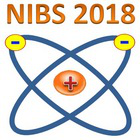Speaker
Prof.
Ursel Fantz
(Max-Planck-Institut für Plasmaphysik)
Description
At the BATMAN test facility, prototypes of RF driven sources of negative hydrogen ions for neutral beam heating systems have been developed successfully over the last decades. Recently, the test facility has been upgraded with a new ITER-like extraction system comparable in size to one ITER beamlet group. Like for the ITER sources, the magnetic filter field can now also be generated by a current flowing through the plasma grid with the option to use dedicatedly the permanent magnets embedded into a diagnostic flange or in an external magnet frame as in the previous BATMAN setup. In addition, the diagnostic access to the ion source plasma was improved. Together with an enhanced spectroscopic system, this offers the unique possibility to study the plasma parameters and their dependence on the magnetic filter field by emission spectroscopy more thoroughly.
The OES measurements were carried out with a high resolution spectrometer (FWHM ≈ 16 pm @ 600 nm) at three different lines of sight: one going in axial direction through the cylindrical ion source driver, one in horizontal direction through the expansion volume and one in the same direction but close to the plasma grid. Plasma parameters are obtained from the measured emissivities of the atomic Balmer series and the molecular Fulcher-transition via applying the collisional radiative models Yacora H and H2. In addition, a refined evaluation procedure is used for investigating the rovibrational population of the hydrogen molecule allowing for a more accurate determination of the gas temperature. This is of particular relevance for calculation of the gas pressure profile in the extraction system, which is required for the determination of the H– stripping losses in this region.
Primary author
Prof.
Ursel Fantz
(Max-Planck-Institut für Plasmaphysik)
Co-author
Dr
Stefan Briefi
(Max-Planck-Institut für Plasmaphysik)

